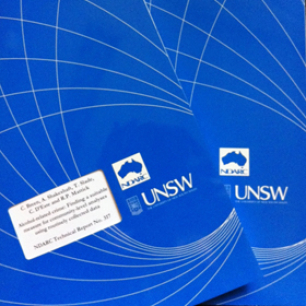NDARC Technical Report No. 243
EXECUTIVE SUMMARY
This report presents the results of the 2005 Illicit Drug Reporting System (IDRS) for the Northern Territory (NT). This is the seventh year that the IDRS has been conducted in the NT.
The IDRS is coordinated by the National Drug and Alcohol Research Centre (NDARC) which is part of the University of NSW. It is jointly funded by the Australian Government Department of Health and Ageing (the Department) and by the National Drug Law Enforcement Research Fund (NDLERF).
The IDRS combines data from a survey of injecting drug users (IDU), a survey of key experts (KE) and the collation of illicit drug-related indicator data to monitor the price, purity and availability of a range of illicit drug classes and to identify emerging trends in illicit drug use and the illicit drug market.
Demographic characteristics of injecting drug users
As in previous years, the IDU sample was primarily male (71%), aged in the mid-to-late-thirties (mean=38 years), spoke English at home, and was unemployed (81%). Fifteen percent of the sample identified as indigenous, 56% had been in prison, and 24% were in treatment at the time of interview.
Patterns of drug use among IDU
The five illicit drugs most commonly used by the IDU sample in the last six months remain unchanged from the previous year: morphine, cannabis, speed powder, benzodiazepines and some form of methadone. Morphine use and injection among the IDU remains stable compared to last year; diverted MS Contin is still the preferred form, although Kapanol use is increasing. Recent speed use and injection continues to rise while recent use and injection of the other two
forms of methamphetamines, base and crystal, have declined. Recent use and injection of heroin has fluctuated over the last three years. The proportion using and injecting illicit methadone syrup increased this year, with the other forms fluctuating.
Heroin
- At a median of $80 per cap, the price of heroin has increased compared to last year.
- Purity continues to be rated as low.
- Occurrence of heroin use in the NT IDU sample has decreased this year, but is still greater than that found in 2003.
- Availability continues to be limited, with heroin rated by most users as difficult or very difficult to obtain.
Methamphetamine
- The median price of a gram of powder has increased from $100 in 2003 to $280 in 2005.
- IDU continue to rate speed and base as easy to obtain, while crystal is rated equally as 'easy' and 'difficult'.
- Powder continues to be the most common and most frequently used form, and recent use of base and crystal show decreases since 2003.
- Recent methamphetamine use and injection remains high, with continuing increases in the proportions of IDU reporting injection.
- Median days of use for all forms of methamphetamine have risen since last year..
Cocaine
- Cocaine use in the NT remains low with some indication that its presence and use has increased slightly in the last two years.
Cannabis
- The price of cannabis remains unchanged since 2003 at around $25 for a gram of any form, $300 for an ounce of the hydroponic form and $200 for an ounce of bush cannabis.
- Cannabis continues to be rated as easy or very easy to obtain by both key experts and IDU.
- The potency of cannabis is quoted as medium to high, as in previous years.
- AODTS treatment episodes with cannabis as the primary or other drug of concern is decreasing.
- The number and weight of cannabis seizures continues to increase in the NT.
Use of illicit pharmaceuticals
- The price of morphine is stable at $50 for a 100mg tablet of MS Contin but increased for Kapanol.
- Most IDU who commented continue to report morphine as 'easy' to obtain.
- The use of licit morphine among the IDU sample has remained stable since last year and illicit use has decreased.
- MS Contin continues to be the primary injected opiate in Darwin.
- Recent use of licit methadone and illicit Physeptone has increased since 2004.
Associated harms
- Some injection-related risk behaviours have increased, including borrowing and sharing needles.
- Selected injection-related health problems increased among the IDU and particularly among those injecting benzodiazepines.
- In 2004, morphine injectors were more likely to report an injection-related problem; this year it is benzodiazepine injectors who are more likely.
- Just under half of the sample had recently driven soon after taking an illicit drug; most commonly this was morphine.
- Proportions reporting experiencing mental problems remain consistent.
- Almost a third of IDU reported being verbally aggressive whilst coming down from a drug; this was most commonly from morphine.
- Arrest rates and crime have gone down in all categories except violent crimes.
Citation: Newman, J. and Moon, C. (2006) Northern Territory Drug Trends 2005: Findings from the Illicit Drug Reporting System (IDRS), Sydney: National Drug and Alcohol Research Centre.


